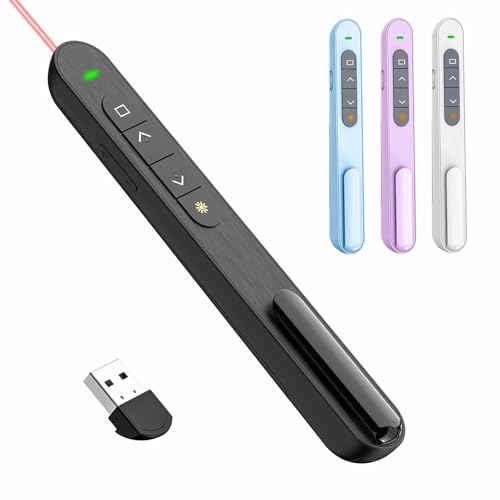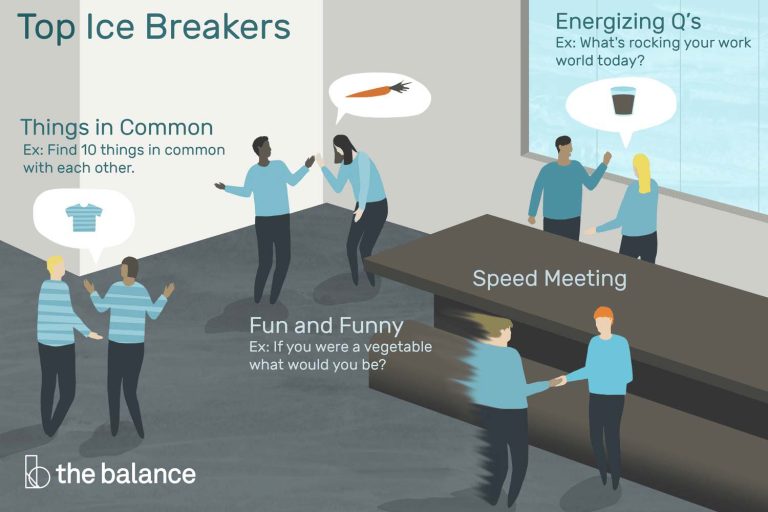How To Start A Conference Presentation?
Are you preparing to give a conference presentation but unsure of how to start? Don’t worry, we’ve got you covered! The beginning of your presentation is crucial in capturing your audience’s attention and setting the tone for the rest of your talk. In this article, we will provide you with valuable tips and strategies on how to start a conference presentation that will engage your audience from the very beginning. From crafting a compelling opening line to using attention-grabbing visuals, we will guide you through the process, ensuring that your presentation leaves a lasting impact. Get ready to kick off your presentation with confidence and captivate your audience right from the start!
When it comes to starting a conference presentation, the first few minutes are vital. It’s during this time that you have the opportunity to make a strong impression and grab your audience’s attention. In this article, we will explore effective techniques and strategies to help you start your presentation on the right foot. Whether it’s through a thought-provoking question, a compelling story, or a surprising statistic, we will provide you with practical advice on how to create an engaging opening that will leave your audience wanting more. Get ready to captivate your listeners and make a lasting impact with your conference presentation!
How To Start A Conference Presentation?
Here are some suggestions on how to start a conference presentation based on real-life experiences from influential public speakers:
- Begin with a Captivating Story: Start your conference presentation with a relevant and engaging story from your own life or experiences. Storytelling is a powerful tool to grab your audience’s attention and make an emotional connection. It sets the tone for your talk.
- Ask a Thought-Provoking Question: Pose a thought-provoking question that relates to the topic of your presentation. Encourage the audience to think about the subject matter and its significance. A well-crafted question can stimulate curiosity and engagement.
- Share a Startling Statistic or Fact: Presenting a surprising statistic or fact can immediately pique the audience’s interest. It can be a compelling way to highlight the importance of your topic and its relevance to the audience.
- Use a Relevant Quote: Incorporate a relevant and inspirational quote from a well-known figure in your field or from a historical figure. Quotes can add depth to your message and resonate with the audience.
- Introduce Yourself Briefly: Provide a brief introduction of yourself, emphasizing your qualifications and expertise related to the topic. Keep this part concise and focused on why you are the right person to speak on the subject.
- State the Purpose and Benefits: Clearly state the purpose of your presentation and what the audience can expect to gain from it. Highlight the benefits they will receive by actively participating in your talk.
- Outline Your Presentation: Give the audience an overview of the structure of your presentation. Outline the key points or topics you will cover. This roadmap helps the audience follow your presentation more easily.
- Engage the Audience: Encourage audience participation early on. This could involve a show of hands, a brief interactive activity, or a rhetorical question. Engaging the audience from the start keeps their attention focused.
- Relate to the Audience: Connect with the audience by acknowledging their presence and relevance to the topic. Explain how your presentation is tailored to address their needs or interests.
- Express Enthusiasm: Demonstrate your enthusiasm and passion for the subject matter. Your energy and excitement are contagious and will help create a positive atmosphere in the room.
- Use Visuals Sparingly: If you plan to use visuals, such as slides, use them sparingly in the beginning. Visuals should enhance your message, not overwhelm the audience. You can introduce the concept of visuals but save their full use for later in the presentation.
- Maintain Eye Contact: Throughout your opening, maintain eye contact with the audience. This establishes a connection and conveys confidence.
- Practice and Timing: Ensure that your opening is well-rehearsed and fits within your allotted time. A well-timed opening sets a professional tone for your presentation.
- Stay Calm and Confident: Nervousness is natural, even for experienced speakers. Take a deep breath, stay calm, and project confidence. Your audience will respond positively to your composure.
Remember that the opening of your conference presentation sets the stage for the entire talk. It should capture your audience’s attention, establish your credibility, and create a sense of anticipation for what’s to come. By using one or more of these techniques, you can start your presentation on a strong and engaging note.
- Greet the audience and introduce yourself.
- Grab their attention with an engaging opening statement or question.
- Outline the purpose and agenda of your presentation.
- Provide an overview of the main points you’ll cover.
- Transition smoothly into the main body of your presentation.
What is the purpose of a conference presentation?
A conference presentation serves as a platform to share information, ideas, research, and expertise with a specific audience. The purpose is to engage and educate the audience on a particular topic, showcase your knowledge and insights, and create opportunities for networking and collaboration. Conference presentations can be a powerful tool for professional development, career advancement, and establishing oneself as an expert in a specific field.
The purpose of a conference presentation can vary depending on the specific goals and objectives of the conference, the nature of the audience, and the subject matter being presented. However, the primary purposes of a conference presentation typically include but not limited to:
- Sharing Knowledge and Research: One of the main purposes of a conference presentation is to disseminate valuable knowledge, research findings, insights, and expertise related to a particular field or topic. Presenters often share the results of their research, case studies, or innovative ideas with the audience.
- Education and Learning: Conference presentations serve as educational opportunities for attendees. They provide a platform for presenters to impart information, concepts, and skills that can enhance the knowledge and understanding of the audience.
- Networking: Conferences bring together professionals, experts, and enthusiasts from various backgrounds. Presentations offer a chance for attendees to connect with like-minded individuals, exchange ideas, and expand their professional networks.
- Professional Development: Attendees can gain new skills, strategies, and insights from conference presentations that are directly applicable to their careers and professional growth. Workshops and seminars are often included to facilitate this.
- Inspiration and Motivation: Some conference presentations aim to inspire and motivate attendees. Speakers may share personal stories, success narratives, or examples of overcoming challenges to inspire others to take action and pursue their goals.
- Problem Solving: In some cases, conference presentations address specific challenges or problems within an industry or field. Presenters may offer solutions, strategies, or best practices to help attendees address these issues.
- Showcasing Innovation: Conferences are often platforms for showcasing innovation, whether it’s new technologies, products, services, or approaches. Presentations can introduce attendees to cutting-edge developments.
- Professional Visibility: For presenters, conferences provide an opportunity to enhance their professional visibility and reputation. Delivering a well-received presentation can elevate one’s status within their field.
- Feedback and Discussion: Presentations can invite feedback and open discussions on important topics. Q&A sessions and panel discussions allow attendees to seek clarification, share their perspectives, and engage in constructive dialogue.
- Promoting Collaboration: Conferences encourage collaboration among individuals and organizations. Presenters may use their presentations to explore potential partnerships, collaborations, or joint projects.
- Promoting Products or Services: In some cases, conference presentations may have a promotional aspect. Businesses or organizations may use presentations to introduce their products, services, or solutions to a relevant audience.
- Advocacy and Awareness: Presentations can raise awareness of important social, environmental, or advocacy-related issues. Advocacy groups and nonprofits may use conferences as a platform to inform and engage their audience.
- Entertainment and Engagement: Depending on the conference’s theme and goals, presentations may include elements of entertainment or engagement to captivate the audience’s attention and make the experience enjoyable.
It’s important to note that the specific purpose of a conference presentation may vary from one event to another. Presenters should be clear about their objectives and tailor their presentations to meet the expectations and needs of the audience and organizers. Additionally, a successful conference presentation often achieves multiple purposes simultaneously, providing value to both presenters and attendees.
Explore Other Aspects
How do you choose a topic for a conference presentation?
When choosing a topic for a conference presentation, it is essential to consider your audience, your expertise, and the relevance of the topic to the conference theme or objectives. Start by evaluating your knowledge and experience in a particular area. Identify your unique insights or research findings that can contribute to the conference’s overall theme.
Consider the interests and needs of the target audience. Choose a topic that is timely, relevant, and addresses current challenges or trends in your field. Conduct thorough research to ensure that the chosen topic has not been extensively covered in previous conferences. This will help you provide fresh and valuable content to the audience.
What are some effective opening phrases for a conference presentation?
There are several effective opening phrases you can use to start your conference presentation:
– “Good morning/afternoon/evening, ladies and gentlemen.”
– “Thank you for the opportunity to speak today.”
– “Imagine a world where…”
– “Have you ever wondered…”
– “Today, I am here to talk to you about…”
– “Let me paint a picture for you…”
– “In the next few minutes, I will share with you…”
– “I want to start by telling you a story…”
– “Did you know that…”
– “Have you ever faced a situation where…”
How do you structure a conference presentation?
A well-structured conference presentation is crucial for effectively conveying your message and engaging the audience. Start with a compelling introduction that captures the audience’s attention and provides an overview of your topic. Clearly state your objectives and the key points you will be addressing throughout the presentation.
Next, organize your content logically, using headings and subheadings to create a flow of information. Ensure that each point is supported by evidence, examples, or data to make your presentation more credible and persuasive. Use visuals, such as slides or props, to enhance understanding and engagement.
Conclude your presentation by summarizing the key takeaways and reinforcing your main message. Encourage audience participation by allowing time for questions and discussion. Finally, end with a memorable ending that leaves a lasting impression on the audience.
Are you preparing to deliver a conference presentation but feeling unsure about how to start? Look no further! In this guide, we will provide you with valuable tips and techniques to capture your audience’s attention right from the beginning. Whether you are a seasoned presenter looking to enhance your opening or a beginner seeking a strong foundation, this article will equip you with the knowledge and confidence to start your conference presentation on the right note. Get ready to make a lasting impression and leave your audience excited and engaged throughout your entire talk.
Starting a conference presentation can be daunting, but with the right strategies, you can captivate your audience from the very first moment. Your opening sets the tone for the rest of your presentation, so it’s crucial to make it engaging and memorable. In this article, we will share practical tips and techniques that will help you craft an impactful and attention-grabbing introduction. Whether you prefer to begin with a captivating story, a thought-provoking question, or a powerful statistic, we’ve got you covered. So, let’s dive in and discover the secrets to starting a conference presentation that will leave your audience wanting more.
How to Start a Conference Presentation:
- Begin with a captivating opening line to grab the audience’s attention.
- Introduce yourself and briefly mention your expertise or credentials.
- State the purpose of your presentation and outline what you will cover.
- Engage the audience by asking a thought-provoking question or sharing a relevant story.
- Transition smoothly into the main content of your presentation.
How to Start a Conference Presentation?
Starting a conference presentation effectively is crucial in capturing your audience’s attention and setting the tone for the rest of your talk. Here are some tips on how to start a conference presentation:
1. What is the importance of a strong opening in a conference presentation?
A strong opening is vital in a conference presentation as it sets the stage for the entire talk. It helps to engage the audience from the beginning and creates a positive first impression. A powerful opening can make your presentation memorable and increase the chances of your audience staying engaged throughout.
To create a strong opening, consider using a compelling story, a thought-provoking quote, or a surprising statistic. The goal is to capture your audience’s attention and make them eager to hear more.
2. How can I grab the audience’s attention right from the start?
One effective way to grab the audience’s attention is by starting with a captivating story or anecdote. By sharing a personal or relevant story, you can connect with your audience on an emotional level and make them more engaged. Another approach is to begin with a thought-provoking question that relates to your topic. This immediately involves the audience and encourages them to think critically about the subject matter.
Additionally, you can use visual aids, such as a striking image or a short video clip, to capture the audience’s attention. These visual elements can create intrigue and stimulate curiosity, making the audience eager to learn more about your presentation.
3. Should I include humor in the opening of my conference presentation?
Using humor in the opening of your conference presentation can be highly effective, but it depends on your audience and the nature of the event. Humor can help to break the ice, create a relaxed atmosphere, and make your presentation more enjoyable for the audience.
However, it is important to use humor tastefully and consider the cultural and professional context of your audience. Avoid offensive or controversial jokes that may alienate or offend certain individuals. Instead, opt for light-hearted and relatable humor that can resonate with a wide range of people.
4. How can I establish credibility at the beginning of my presentation?
To establish credibility at the beginning of your presentation, you can briefly introduce yourself and highlight your expertise or experience related to the topic. This helps to build trust with the audience and demonstrates that you are qualified to speak on the subject matter.
In addition to introducing yourself, you can also mention any relevant credentials or achievements that further enhance your credibility. It is important to strike a balance between showcasing your expertise and coming across as boastful, so be concise and focus on the most relevant and impressive aspects of your background.
5. What are some effective opening phrases for a conference presentation?
There are several effective opening phrases you can use to start your conference presentation:
– “Good morning/afternoon/evening, ladies and gentlemen.”
– “Thank you for the opportunity to speak today.”
– “Imagine a world where…”
– “Have you ever wondered…”
– “Today, I am here to talk to you about…”
– “Let me paint a picture for you…”
– “In the next few minutes, I will share with you…”
– “I want to start by telling you a story…”
– “Did you know that…”
– “Have you ever faced a situation where…”
6. How long should the opening of a conference presentation be?
The length of the opening of a conference presentation depends on various factors, including the overall duration of your talk and the complexity of your topic. As a general guideline, the opening should be concise and captivating, typically lasting around 5-10% of the total presentation time.
Avoid spending too much time on the opening, as it can cause the audience to lose interest. Instead, aim to deliver a punchy and engaging introduction that sets the stage for the main content of your presentation.
7. What are some common mistakes to avoid when starting a conference presentation?
When starting a conference presentation, it is important to avoid the following common mistakes:
– Apologizing or downplaying your expertise.
– Jumping straight into the content without providing any context.
– Reading directly from your slides or notes.
– Using jargon or technical terms without explaining them.
– Failing to engage with the audience through eye contact and body language.
– Starting with a lengthy introduction that loses the audience’s interest.
– Overwhelming the audience with too much information right from the start.
– Neglecting to establish a clear objective or takeaway for the audience.
– Ignoring the importance of rehearsing and practicing your opening.
How do you engage the audience during a conference presentation?
Engaging the audience during a conference presentation is essential to maintain their interest and make your presentation memorable. Start by creating a connection with the audience through an engaging opening, such as a powerful quote, a personal story, or a thought-provoking question.
Throughout the presentation, use interactive techniques such as asking rhetorical questions, conducting polls or surveys, or incorporating group activities. This encourages active participation and makes the presentation more dynamic and engaging. Use visuals, such as images, videos, or charts, to illustrate key points and make the content more visually appealing.
Additionally, maintain a conversational tone by using inclusive language, making eye contact, and using gestures to emphasize important points. Be mindful of the pacing and energy level of your presentation, as a monotone or lack of enthusiasm can quickly disengage the audience. Finally, encourage questions and discussion to create a two-way dialogue and foster engagement.
How do you prepare for a conference presentation?
Preparing for a conference presentation is vital to ensure a successful and impactful delivery. Start by thoroughly researching your topic and collecting relevant data, examples, or case studies that support your key points. Organize your content in a logical and coherent manner, keeping in mind the time constraints of the presentation.
Practice your presentation multiple times to become familiar with the flow, timing, and transitions. Consider recording yourself or practicing in front of a mirror to evaluate your body language, gestures, and overall delivery. Rehearse answering potential questions or challenges that may arise during the presentation.
Prepare visual aids, such as slides or handouts, to accompany your presentation. Ensure they are visually appealing, concise, and support your key points. Finally, make sure to arrive early on the day of the conference, test the audiovisual equipment, and mentally prepare yourself to confidently deliver your presentation.
How do you overcome nervousness during a conference presentation?
Feeling nervous before a conference presentation is natural, but there are strategies to help you overcome it and deliver a confident presentation. Start by acknowledging and accepting your nervousness, as it is a normal response to a challenging situation.
Prepare thoroughly and practice your presentation to build confidence in your content and delivery. Visualize yourself delivering a successful presentation and receiving positive feedback from the audience. Deep breathing exercises and positive self-talk can also help calm your nerves before taking the stage.
During the presentation, maintain a relaxed posture, make eye contact with the audience, and remember to smile. Focus on the value you are providing to the audience and remind yourself that you are the expert on the topic. Engage the audience through interactive techniques, which can divert some of your nervous energy and create a more enjoyable experience for both you and the audience.
How do you handle technical issues during a conference presentation?
Technical issues can occur during a conference presentation, but being prepared and staying calm can help you handle them effectively. Start by familiarizing yourself with the audiovisual equipment and testing it before your presentation. Arrive early to the venue to ensure everything is set up correctly.
If you encounter technical issues, remain calm and composed. Try troubleshooting the problem yourself, such as checking cables, connections, or settings. If necessary, seek assistance from the technical support staff available at the venue.
Prepare for potential technical issues by having a backup plan, such as having a printed copy of your presentation or being prepared to deliver a condensed version without visual aids. Remember that the content and delivery of your presentation are more important than the technical aspects. Maintain your composure, adapt to the situation, and focus on effectively communicating your message to the audience.
How do you make a conference presentation memorable?
Making a conference presentation memorable is important to leave a lasting impact on the audience. Start by crafting a strong opening that grabs the audience’s attention and sets the tone for your presentation. Use storytelling techniques, humor, or thought-provoking questions to engage the audience from the beginning.
Utilize visuals, such as slides, videos, or props, to enhance the audience’s understanding and make your content more memorable. Incorporate personal anecdotes or experiences that relate to the topic, as this can create a stronger connection with the audience.
Additionally, create opportunities for audience interaction and participation. Encourage questions, conduct polls, or incorporate group activities that involve the audience in the presentation. This active engagement helps solidify key points and increases the likelihood of the audience remembering your presentation long after the conference.
How do you create effective slides for a conference presentation?
Creating effective slides for a conference presentation is crucial to support your content and engage the audience visually. Start by keeping your slides simple and uncluttered, using a clean design and legible fonts. Limit the amount of text on each slide, focusing on key points or keywords.
Use visuals, such as images, graphs, or charts, to illustrate your points and make the information more visually appealing. Ensure that the visuals are relevant, high-quality, and easy to understand. Incorporate animations or transitions sparingly to avoid distracting the audience.
Maintain consistency in the design and format of your slides, using the same color scheme, font styles, and layouts throughout the presentation. Use bullet points or numbered lists to organize information and make it easier to follow. Remember that the slides are meant to enhance your presentation, so avoid reading directly from them and instead use them as visual aids to reinforce your message.
How do you manage time during a conference presentation?
Managing time during a conference presentation is essential to ensure that you cover all the key points within the allocated time slot. Start by thoroughly practicing your presentation to become familiar with the timing of each section.
Create an outline or roadmap for your presentation, including the estimated time for each segment. Stick to this plan during your actual presentation, using a timer or clock to keep track of the time. Be mindful of the pace at which you speak, ensuring that you are not rushing through the content or speaking too slowly.
Allocate sufficient time for audience questions and interaction, as this can often extend the duration of your presentation. If you realize that you are running out of time, prioritize the most important points and consider skipping or summarizing less critical information. Maintaining good time management demonstrates professionalism and respect for the audience’s time.
How do you handle difficult questions during a conference presentation?
Handling difficult questions during a conference presentation requires tact, professionalism, and preparation. Start by actively listening to the question, ensuring that you fully understand what the audience member is asking. Take a moment to gather your thoughts before responding.
If you are unsure of the answer, be honest and transparent. Offer to follow up with the individual after the presentation with additional information or resources. Alternatively, you can ask if anyone else in the audience has insights or experiences to share on the topic.
Remain calm and composed, even if the question is challenging or confrontational. Avoid becoming defensive or argumentative, as this can create a negative atmosphere. Instead, respond respectfully and provide evidence or examples to support your viewpoint. Remember that handling difficult questions with grace and professionalism can enhance your credibility and demonstrate your expertise.
How do you adapt your presentation for different audience types?
Adapting your presentation for different audience types is crucial to effectively communicate your message and engage diverse individuals. Start by researching the audience demographics, such as their professional backgrounds, knowledge levels, and interests.
Based on this information, tailor your content to suit the audience’s needs and expectations. Use terminology and language that is accessible to all, avoiding jargon or technical terms that may confuse or alienate certain individuals.
Consider incorporating examples or case studies that are relevant to the audience’s industry or field. This helps them relate to the content and understand its practical applications. Moreover, adjust the level of detail or complexity in your presentation to match the audience’s expertise. Be prepared to provide additional explanations or context if necessary.
How do you encourage networking during a conference presentation?
Encouraging networking during a conference presentation can create opportunities for collaboration, knowledge sharing, and professional growth. Start by emphasizing the importance of networking in your introduction, highlighting the benefits of connecting with like-minded individuals.
Provide opportunities for structured networking within your presentation, such as group discussions, interactive activities, or Q&A sessions. Allocate time at the end of your presentation for informal networking, allowing attendees to exchange contact information or engage in further discussions.
Utilize technology, such as social media platforms or conference apps, to facilitate networking before, during, and after the presentation. Encourage attendees to connect with you on professional networking sites or join relevant online communities to continue the conversation beyond the conference.
How do you handle distractions during a conference presentation?
Handling distractions during a conference presentation requires focus and adaptability. Start by acknowledging that distractions may occur, but remember that your primary goal is to deliver a valuable presentation.
If an audience member is causing a distraction, address it politely and professionally. For example, you can kindly ask them to refrain from using their mobile devices or engaging in side conversations that disrupt the presentation. Maintain a calm and composed demeanor, as becoming confrontational can escalate the situation.
Additionally, be aware of other external distractions, such as noise from neighboring sessions or technical difficulties. If possible, anticipate and plan for such distractions by adjusting your delivery or incorporating techniques to recapture the audience’s attention, such as changing your tone of voice or incorporating interactive elements.
How do you make your conference presentation interactive?
Making your conference presentation interactive can enhance audience engagement and create a more dynamic experience. Start by incorporating interactive elements, such as polls, quizzes, or group activities that involve the audience throughout the presentation.
Encourage audience participation by asking questions, seeking their opinions or experiences, or inviting them to share relevant examples. This creates a two-way dialogue and makes the presentation more conversational.
Utilize technology to facilitate interactivity, such as live polling apps or interactive presentation platforms. This allows attendees to actively participate using their smartphones or other devices.
Moreover, consider incorporating opportunities for small group discussions or brainstorming sessions, allowing attendees to collaborate and share ideas. This not only fosters engagement but also creates networking opportunities among participants.
How do you incorporate storytelling into a conference presentation?
Incorporating storytelling into a conference presentation can make your content more relatable, memorable, and engaging. Start by identifying relevant stories or anecdotes that illustrate key points or support your message.
Begin your presentation with a compelling story that captures the audience’s attention and establishes a connection. Use vivid descriptions, emotions, and relatable characters to make the story more impactful.
Throughout the presentation, intersperse relevant stories to illustrate concepts, provide examples, or share personal experiences. This helps the audience visualize and understand the information in a more meaningful way. Use storytelling techniques such as suspense, humor, or unexpected twists to maintain the audience’s interest.
Finally, conclude your presentation with a meaningful story or call-to-action that leaves a lasting impression on the audience, inspiring them to reflect or take action.
How do you use humor in a conference presentation?
Using humor in a conference presentation can help create a relaxed and enjoyable atmosphere, engage the audience, and make your content more memorable. Start by considering the appropriateness of humor for your topic and audience. Tailor your humor to match the audience’s cultural background, professional environment, and sensitivity.
Incorporate relevant and relatable jokes, anecdotes, or humorous stories that align with your content. Use self-deprecating humor or light-hearted observations to make the audience feel at ease and establish a connection.
Timing is crucial when using humor, so consider the flow and pacing of your presentation. Incorporate humor at appropriate intervals, such as during transitions or when introducing a new concept. Pay attention to the audience’s response and adjust your delivery accordingly.
Remember that humor should enhance your presentation, not detract from it. Avoid offensive or controversial jokes that may alienate or offend certain individuals. Keep the humor light and positive, focusing on creating a pleasant and enjoyable experience for the audience.
How do you make a conference presentation accessible for all attendees?
Making a conference presentation accessible for all attendees is essential to ensure inclusivity and engage diverse individuals. Start by considering the accessibility needs of the audience, such as individuals with visual or hearing impairments, cognitive disabilities, or language barriers.
When using visuals, provide alternative text descriptions or captions for individuals with visual impairments. Ensure that your slides or handouts have sufficient contrast and legible font sizes. Use clear and concise language, avoiding jargon or technical terms that may be difficult to understand for non-experts.
Speak clearly and at a moderate pace, allowing individuals with hearing impairments to follow along. Consider providing sign language interpreters or using assistive listening devices if necessary.
Be mindful of cultural and language differences among the audience. Use inclusive language and avoid assumptions or stereotypes. Consider providing translated materials or offering a summary of your presentation in multiple languages if appropriate.
How do you evaluate the success of a conference presentation?
Evaluating the success of a conference presentation allows you to assess the impact of your message and identify areas for improvement. Start by reviewing feedback from the audience, such as survey responses or direct comments. Analyze the feedback to identify common themes, areas of strength, and areas that need improvement.
Consider the level of engagement and interaction during the presentation. Did the audience ask questions, participate in discussions, or provide feedback? Assess whether the audience was actively engaged and interested in your content.
Reflect on your own performance and delivery. Did you effectively convey your message and engage the audience?
How to Start a Speech
Final Thoughts
In conclusion, starting a conference presentation can be a daunting task, but with careful planning and preparation, you can captivate your audience from the very beginning. By following these three key steps, you can ensure that your presentation grabs attention, establishes credibility, and sets the stage for a successful event.
Firstly, it is crucial to hook your audience with a powerful opening. Begin with a thought-provoking question, a compelling statistic, or a captivating anecdote that relates to your topic.
Secondly, establish your credibility as a speaker. Share your qualifications, experience, or expertise on the topic to build trust and confidence in your audience by briefly mentioning your educational background, professional achievements, or relevant research you have conducted.
Lastly, set the stage for a successful event by outlining the main points you will be discussing throughout your presentation. This can be done by providing a brief overview of the key topics or themes you will be covering.





